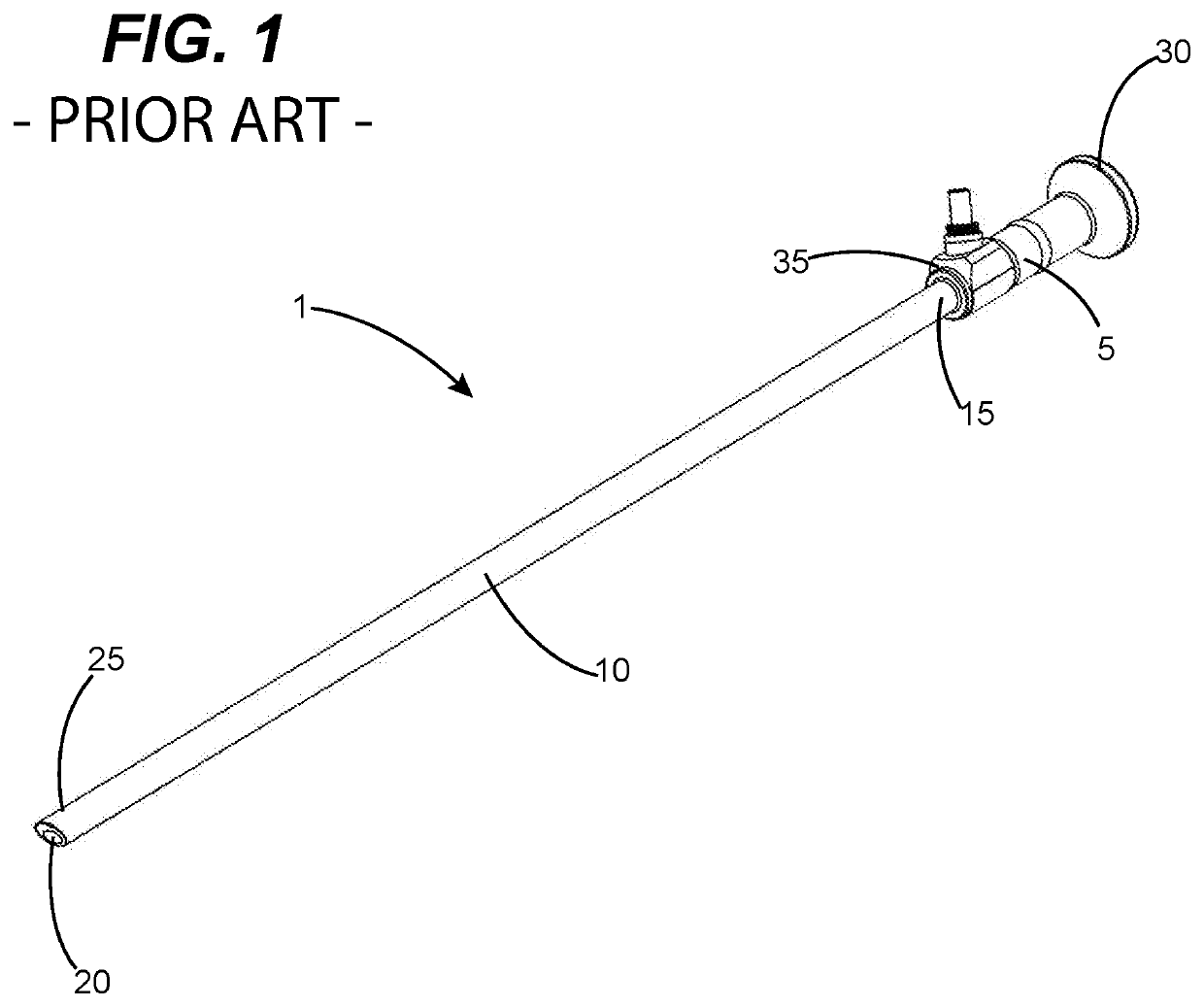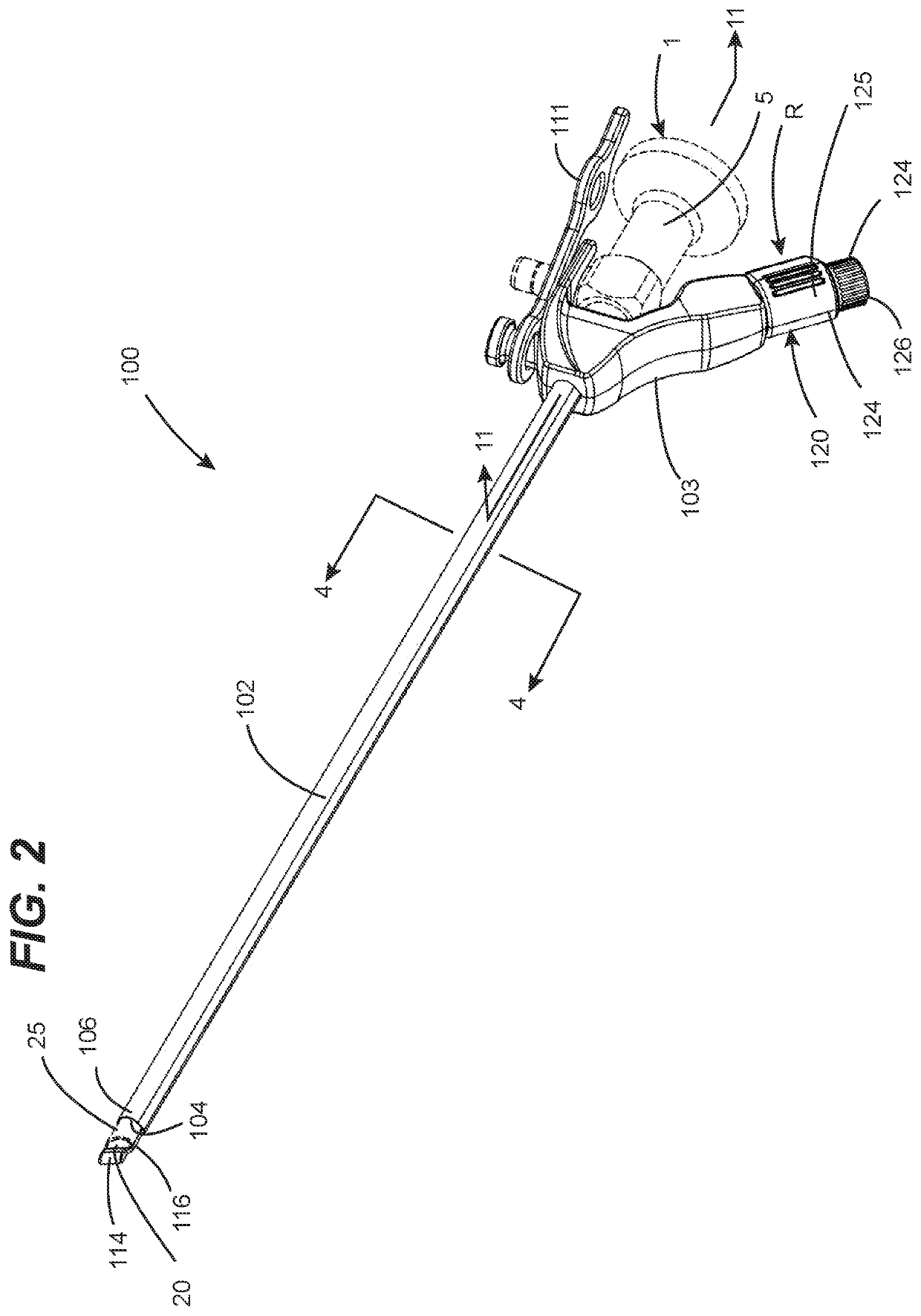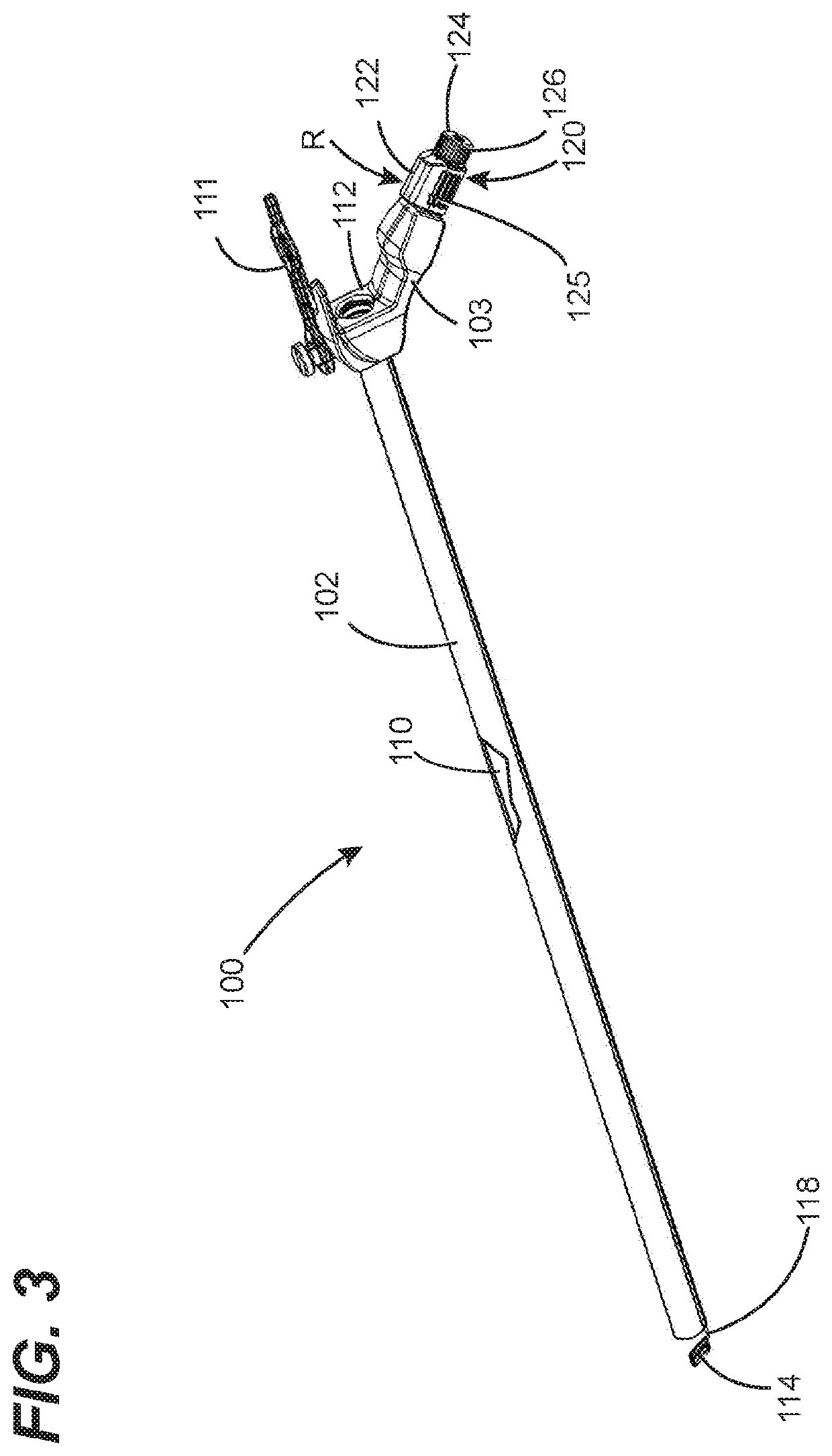Imaging element cleaning apparatus with structure-mandated cleaning member motion control
a technology of cleaning apparatus and cleaning element, which is applied in the field of cleaning devices, can solve the problems of insufficient effectiveness, surgeons losing vision of the surgical site, and impaired exposure surface of the imaging element thereof, and achieves the effect of effective and reliabl
- Summary
- Abstract
- Description
- Claims
- Application Information
AI Technical Summary
Benefits of technology
Problems solved by technology
Method used
Image
Examples
Embodiment Construction
[0043]FIGS. 2-10 illustrate various aspects of an in vivo endoscope cleaning apparatus configured in accordance with a first embodiment of the present invention, which is designated as cleaning apparatus 100. Cleaning apparatus 100 is preferably, but not necessarily, configured to be used with commercially available endoscopes, such as endoscope 1 of FIG. 1. Examples of such commercially available endoscopes include, but are not limited to, endoscopes manufactured under brand names of Karl Storz, Linvatec, Olympus, Richard Wolf, Stryker and Intuitive Surgical (i.e., DaVinci). To this end, in preferred embodiments, cleaning apparatus 100 can be engineered as endoscope-specific for a given model(s) of one or more manufacturers based on the dimensional attributes of such commercially available endoscopes. An underlying consideration of the manner in which the endoscope cleaning apparatus 100 is engineered for an intended brand(s) or model(s) of endoscope is that there be a high level o...
PUM
 Login to View More
Login to View More Abstract
Description
Claims
Application Information
 Login to View More
Login to View More - R&D
- Intellectual Property
- Life Sciences
- Materials
- Tech Scout
- Unparalleled Data Quality
- Higher Quality Content
- 60% Fewer Hallucinations
Browse by: Latest US Patents, China's latest patents, Technical Efficacy Thesaurus, Application Domain, Technology Topic, Popular Technical Reports.
© 2025 PatSnap. All rights reserved.Legal|Privacy policy|Modern Slavery Act Transparency Statement|Sitemap|About US| Contact US: help@patsnap.com



